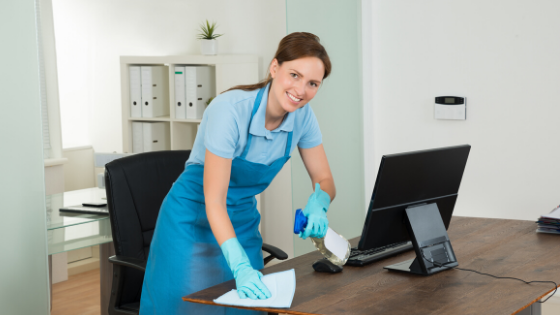 Health and safety are on everyone’s minds as businesses reopen.
Health and safety are on everyone’s minds as businesses reopen.
Leaders at commercial and industrial workplaces can take steps to protect their employees and the public. The more employers take action, the easier it will be to maintain the state’s progress against coronavirus while ensuring businesses can continue operating.
The situation is unprecedented, so many team leaders are unsure how to proceed.
Luckily, there are policies and procedures that can help. While some of them require a trade-off in time or efficiency, preventing infection is crucial. Team members must work together for everyone’s well-being.
Here’s how you can get started with a safer workplace for your entire workforce:
1. Make Use of Remote Work Whenever Possible
Companies around the world have embraced remote work like never before. Many firms where telework was never an option before now see it as their best way forward.
Of course, some jobs require face-to-face contact – for example, commercial painting services. But many roles can be moved online with a minimum of disruption.
Take a close look at your workforce and the distribution of duties. Where working from home makes sense, seriously consider it. Setting up collaboration software like Slack and Zoom or other videoconferencing apps can help you stay in contact.
If a full five days of remote work is impossible, make sure there are clear guidelines about which days each staff member should report in.
2. Stagger Shifts for Personnel Who Must Report to Work
Workers whose jobs require them to be on site – usually to access equipment – should have staggered arrival and departure times whenever possible This may require opening your facility earlier or keeping it open later. Maintaining 50% occupancy or less greatly increases safety.
Depending on the size of your team and the need for in-person collaboration, you might choose to implement flexible scheduling. Teams can negotiate their own in-office time to minimize risk while still enabling them to collaborate closely as projects demand.
3. Control Access to Your Facilities Wisely
Entrance and exit points from your facility should be equipped with hand sanitizer or wipes and personal protective equipment where possible. Reducing the number of entrance points can help everyone follow sanitation guidelines uniformly, but beware of creating bottlenecks in one area.
Make sure exterior signage clarifies any new safety protocols so team members and visitors will be prepared. Turn off (and, if possible, remove) touchscreens and any other exterior objects that require frequent contact. Be sure door handles are included in any enhanced cleaning protocols.
4. Optimize Interior Spaces to Reduce Group Size
Streamline your space by reducing seating at gathering points and meeting areas, and convert smaller rooms for single occupant use only. Specify seating arrangements for on-site personnel so it’s easier to adhere to minimum work distances while getting projects done.
Privacy panels and plexiglass shielding are being used by some workplaces to further safeguard against incidental contamination risks. If possible, it’s best to install protective materials before workers return. Floor markings can help direct foot traffic in high traffic areas.
5. Update Cleaning Protocols
Enhanced cleaning and disinfecting will be essential to employee safety.
In addition to entry and exit points, bathrooms and workstations should be equipped with alcohol-based sanitizing products if possible. Personal protective equipment should be used in accordance with the latest public health guidance – including face masks, even in environments where they are not typically used.
Consider removing items and temporarily pausing services that add to daily cleaning tasks: For example, discontinue on-site food service or switch to single-serve items only. Remove shared tools that require lots of contact, such as whiteboards and remotes.
If possible, wipe down all work areas at the end of every day, especially work areas shared by multiple people. This should also include supplies or equipment. If employees need to access personal items throughout the day, institute a secure, centralized storage location.
6. Maintain Communication on Health and Safety
Workplace reopening is a rapidly evolving situation, here in Florida and elsewhere. As time goes on, requirements are sure to change. At the same time, it will be easy for certain crucial safety practices to fall by the wayside. Communication is the key to staying focused.
Set expectations clearly with an emphasis on making everyone as safe as possible. This should include clear mechanisms for collecting employee feedback, questions, and concerns. Make policies on travel, illness, and workplace visitors transparent and accessible to everyone.
7. Execute Necessary Maintenance While Occupancy is Low
Reduced occupancy may make it easier to access certain areas of your business, key equipment, or building systems. In some cases, these can be worked on with minimal disruption. If you have been planning industrial painting or other long-term maintenance projects, now may be the time to revisit those plans safely.






